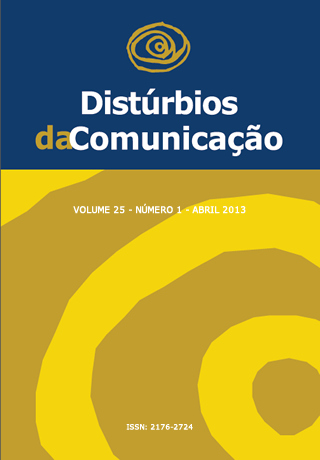The influence of phonological disorder severity in the determination of discharge
Keywords:
speech disorders, speech-language pathology, child language, speech therapy, child.Abstract
Introduction: This paper was performed due to lack of researches that connect the phonological disorder and the number of sessions needed to speech therapy discharge. Purpose: comparing the average time for speech therapy discharge among different phonological disorder severities in children treated by ABAB- Withdrawal and Multiple Probes model. Method: the data comes from the data base of a university. The inclusion criteria were: age between 4:0 and 7:11; have authorization to participate in the research; have the diagnosis of phonological disorder and have received therapy and discharge by ABAB- Withdrawal and Multiple Probes model. The criterion for the discharge was the acquisition of all phonemes of the Brazilian Portuguese phonological inventory. The sample consisted of 41 children, being nine with a mild speech disorder, 18 with a mild-moderate disorder, ten had a moderate-severe disorder and four had a severe disorder. The disorder severity was classified by Percentage of Correct Consonants-Revised. For the data analysis, were accounted the number of sessions in which there were direct interventions. A statistical analysis was performed. Results: the average number of sessions for the mild degree was 15.0, for the mild-moderate was 23.5, for the moderate-severe was 29.7 and for the severe degree was 33.7. It has been verified a significant difference (p=0,002) in the average time of therapy related to the phonological disorder severity. Conclusion: the more severe the phonological disorder, and consequently the bigger gap of the phonological system, more sessions are necessary for the child acquire the adult phonological pattern.Downloads
Metrics
Downloads
Published
Issue
Section
License
Copyright (c) 2013 Fabieli T. Backes, Silvana P. Pegoraro, Vanessa P. Costa, Fernanda M. Wiethan, Roberta M. Melo, Helena B. Mota

This work is licensed under a Creative Commons Attribution 4.0 International License.









